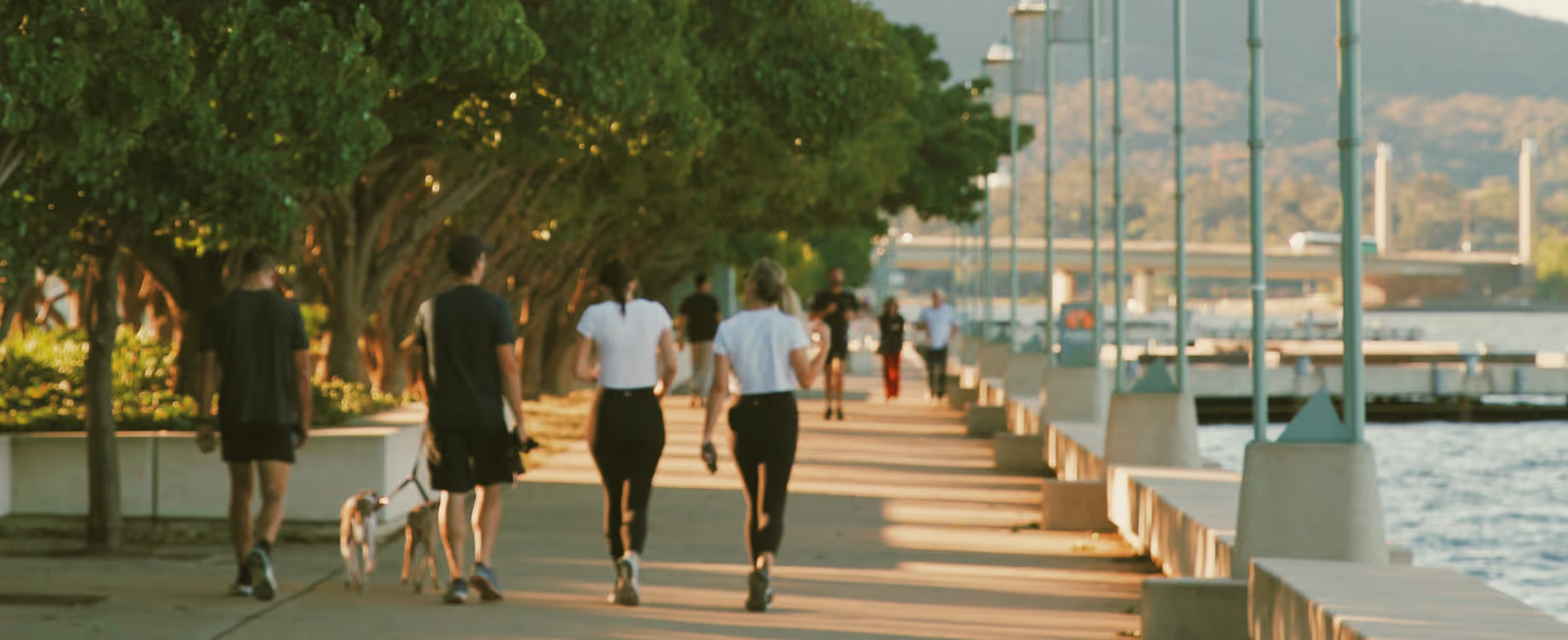What Getting Fit Can Teach Us About Cutting Carbon

Join the community





This is the third in an occasional series by author and climate writer Sami Grover, which draws lessons from existing practices within the worlds of personal finance, nutrition, fitness, and more to help inform how we create a practical, real-world approach to building a climate practice in our lives.
In a 2014 article for Forbes, clinical psychologist and psychoanalyst Todd Essig promised to reveal what he described as the “oh-so-deceptively simple secret to physical fitness.” Following a short preamble on the benefits of physical fitness, he made the big reveal (drum roll):
“Start where you are and show up. That’s right, showing up is the secret.”
This advice was immediately familiar to me. My wife, a registered dietitian, has long championed the idea of pragmatic, strategic approaches to wellness being far more effective than unattainable perfectionism. It’s why she works with her patients on what she calls the “mixed solution,” a strategy I’ve already explored from a carbon-cutting lens. And it’s also why she encourages her patients to start somewhere, literally anywhere, rather than striving for a far-off goal that they are unlikely or unwilling to meet.
Habits Have to Start Somewhere
Clearly, she’s not alone. As Todd Essig goes on to explain in his article, the reason that showing up is the single most important aspect of getting fit is that it’s all about forming habits:
“It doesn’t matter where you start. Just start where you are, and show up. Show up so fitness becomes routine, just like routine personal hygiene. If you habitually show up at the sink to brush your teeth, then you can show up for whatever happens to be your current fitness activity. And we know from many studies on habit formation that showing up today makes it easier to show up tomorrow, even with the occasional ache or pain or sore muscle. Once you start, momentum builds.”
As Essig explains, the idea is to worry less about the perfect exercise routine. Instead, the goal is to find natural places in your life to insert any form of physical exercise, however incremental. Then, as that exercise becomes routine for you, expand on it and broaden your repertoire.
Showing Up for the Climate
The parallels with cutting carbon are likely obvious. In a world of record heat waves and dire headlines, it can be easy to feel paralyzed with guilt about our role in the crisis. After all, for many of us living a so-called Western, tech-enabled lifestyle, even a cursory audit of our lives will find fossil fuel dependence at almost every turn. There are so many ways we harm the environment it can be hard to know how to start reversing it.
Here’s where the idea of “just showing up” flips the script. Instead of worrying about all the places you could or should be taking action, you simply find one or two places where you regularly will. And because fossil fuels and other high-emissions behaviors are literally everywhere, you won’t be short of places to start making a difference:
- Not yet ready to go car-free? Start by telecommuting on Fridays or carpooling to your Wednesday-night card game.
- Can’t imagine going vegan? Meat-free Mondays are a great way to dip your toe in the water and explore recipes that may become favorites for other days of the week.
- Not yet ready to attend a climate protest? Try taking action online, or donate to a climate-related non-profit.
Behavioral Science to the Planetary Rescue
To be fair, the above advice might sound a bit too much like the old truisms about “saving the world one light bulb at a time.” In the past, the environmental movement has faced valid criticism for promoting incremental, individual solutions as a salve for problems that are fundamentally systemic and collective in their nature, so it’s important to be clear on this point:
Small solutions like those suggested above are absolutely not going to solve the climate crisis. But then, neither will running off to live in an off-grid yurt, while the world carries on without you in a business-as-usual fashion.
The point of “just showing up” is not to say that just showing up is enough. It’s simply to acknowledge that we all have to find a place to get started. Dr. BJ Fog outlined the behavioral science behind this approach in his book Tiny Habits. Essentially, the rationale goes like this:
We build habits over time by taking action, which is then followed by some form of result. If we start out by striving for perfection, we choose actions or goals that are essentially out of our reach. So when we fail to see the results we were hoping for, we internalize those results and decide that the action we took was not worth the reward. In other words, we’re neurologically wired to believe that we’re going to fail again.
By contrast, if we choose to start with small, replicable, achievable behaviors that we build into habits, we can create a positive feedback loop. Each small success gives us that little bit more confidence to do more. And before we know it, we can achieve results that seemed impossible at the outset.
Building On Your Carbon Habits
To continue the analogy with physical fitness, we might choose to start by taking an evening walk three times a week. This can be a great way to get used to physical movement, especially if it replaces a less healthy habit like late-night snacking on the couch or drinking an evening beer. But if those evening walks are the only thing we do, they are unlikely to move the needle all that much.
Instead, the goal would be to use those evening walks as a starting point. Then, once we’ve formed a healthy habit and noticed how good it makes us feel, we might expand on it by increasing the distance of our walks or picking up the pace. Maybe we bring weights along to lift as we walk, or we add a second activity, like doing 20 push-ups before we brush our teeth or going for a run on the weekend.
The same can be true for our climate efforts. For example:
- Once you’ve mastered meat-free Mondays, try incorporating plant-based eating into more of your meals.
- If telecommuting or carpooling goes well, consider increasing the frequency that you do it.
- Once you’ve found an organization you can support online, consider attending a meeting or event they are holding to learn more.
Each small success provides a pathway to the next one. The initial activity, which may have felt daunting at first, eventually becomes easier. Then, once it does become easier, we expand our horizons and keep moving forward.
Creating Climate Community
It’s also important to remember that none of us have to do it alone. When we’re looking to get fit, for example, it can be helpful to start in a community with others. That might mean identifying a walking partner or a workout buddy. Or it might mean taking a class or joining a group activity. Not only does this turn exercise into a social opportunity, but it also provides us with accountability partners. Those partners help us to stay motivated when the couch might otherwise be calling us.
Climate action is no different. Even the smallest, climate-friendly habits can be far more easily amplified and built on if we find others with whom we’re taking action. Opportunities to do that might include:
- Volunteering for a local composting program or community garden
- Joining or forming a”‘green team” at work
- Connecting with friends or neighbors who are interested in taking steps to green their lives
You can also join with others online by downloading the Commons app, which connects you with thousands of individuals, each of whom are committed to building their own climate practice. Not only do you get to see how your impact combines with the efforts of others, but you also get to learn from peers who are on a similar climate journey to yours.
No individual can solve the climate crisis alone. That’s why it can be daunting to take on too much responsibility for decarbonizing your life at once. Instead, by acknowledging our limitations, we can let go of the overwhelm and guilt that often afflicts the newly climate conscious.
Instead, we can each find specific places to start showing up. Then, once we start building those climate muscles, all we have to do is keep moving forward and bring others along for the ride.













